Building community from the ground up
‘Brick Park’ is a utopian proposal for a self-build development in London’s outer edge, where an on-site clay pit provides materials for construction and an evolving public open space.

For hundreds of years Slade Green, neighbouring Erith and the Crayford Marshes have together been a centre of manufacturing, sending goods, harvest produce, munitions, and materials along their busy haulage routes – from their rail depot; on barges along the river Thames; and now on their non-stop humming roads.
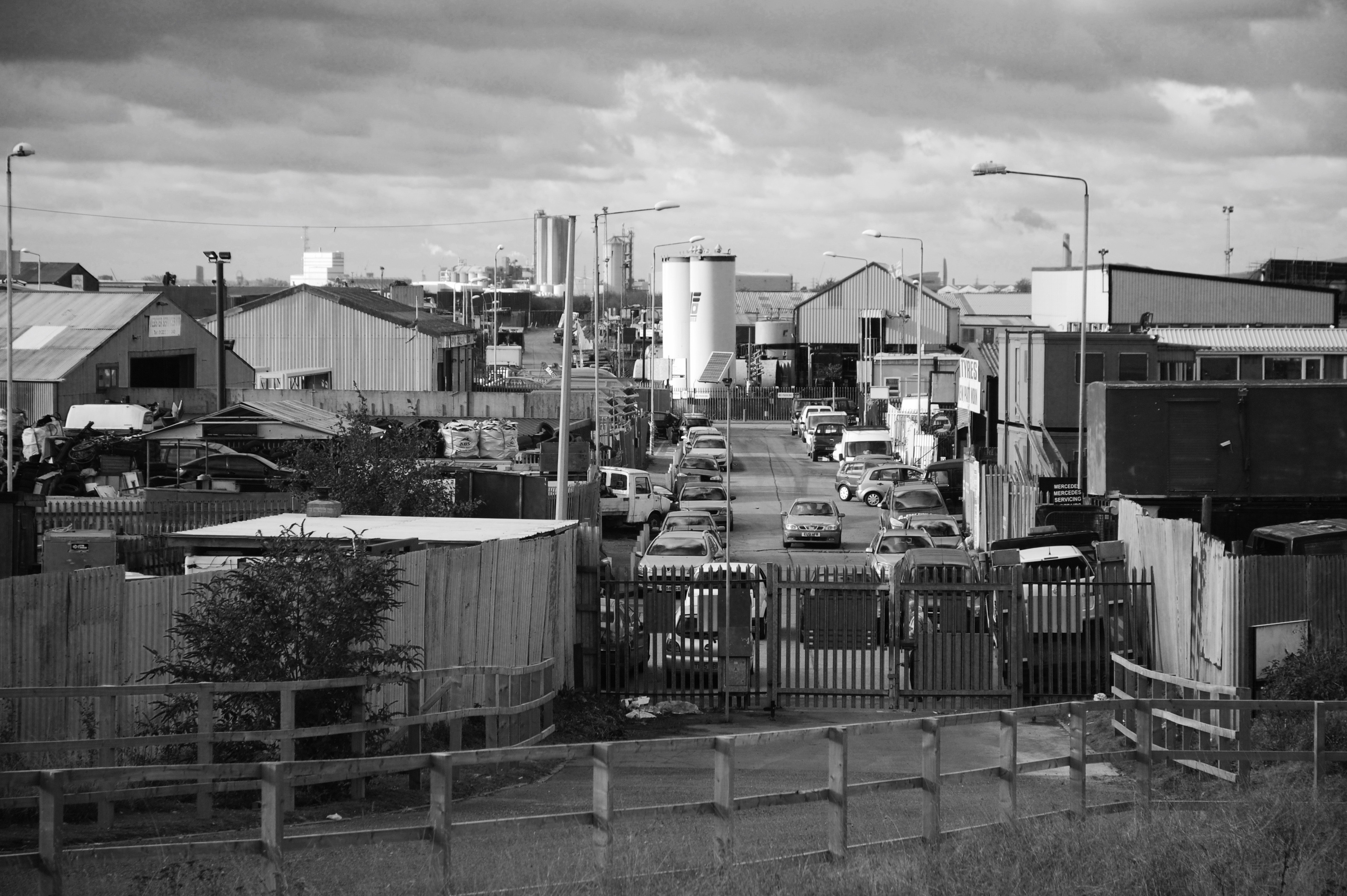
In the 18th century the land between Erith and Crayford was filled with clay pits, brick kilns and yards. A deep seam of brickearth, perfect for making London’s famous yellow stock bricks, lay beneath and Slade Green supplied the brick for much of the city’s spectacular growth. In previous centuries, here, as it was all over Britain, itinerant, skilled brick makers established temporary yards and kilns. Clay was dug on site and buildings would emerge literally from the ground they were to stand upon.
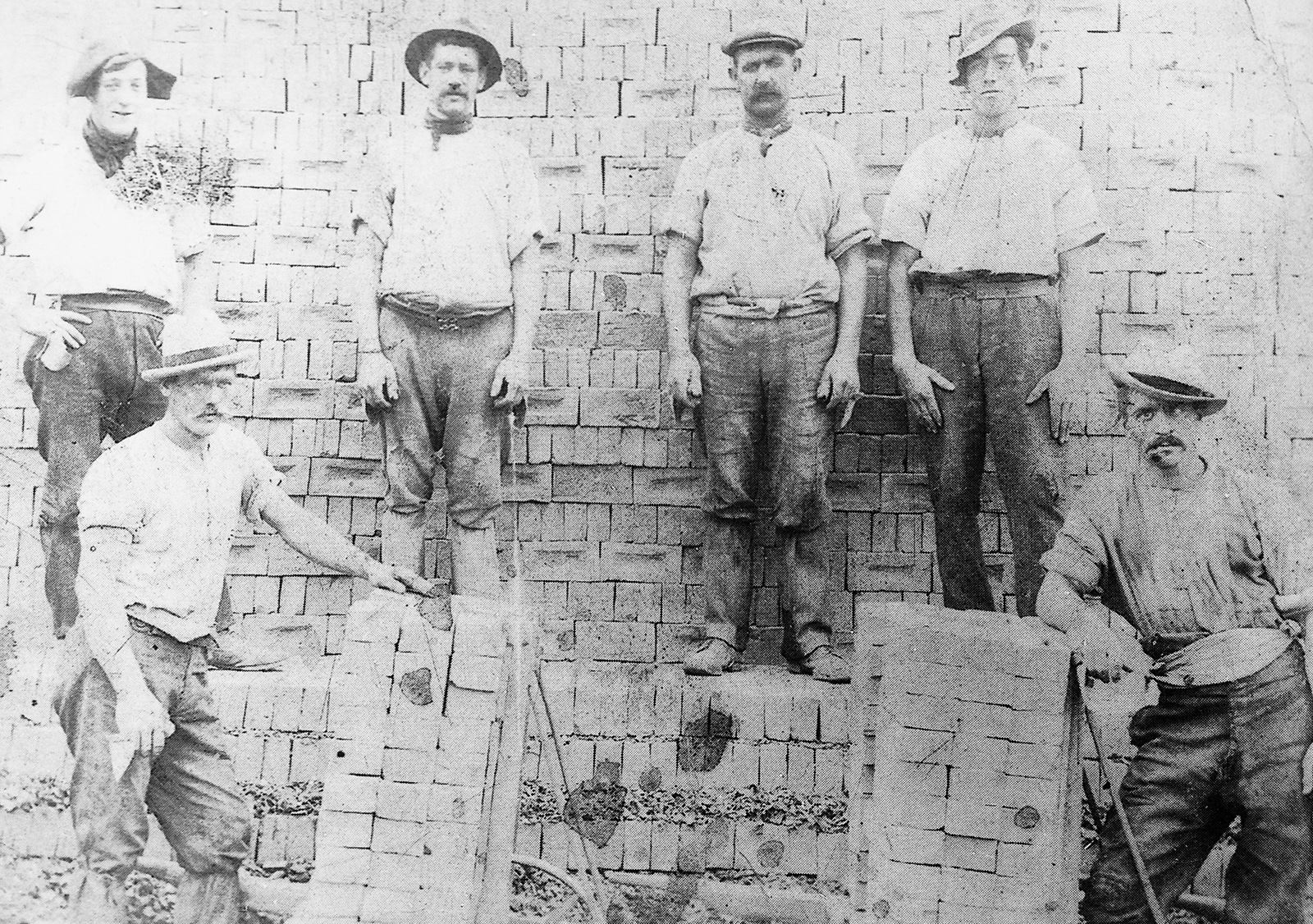
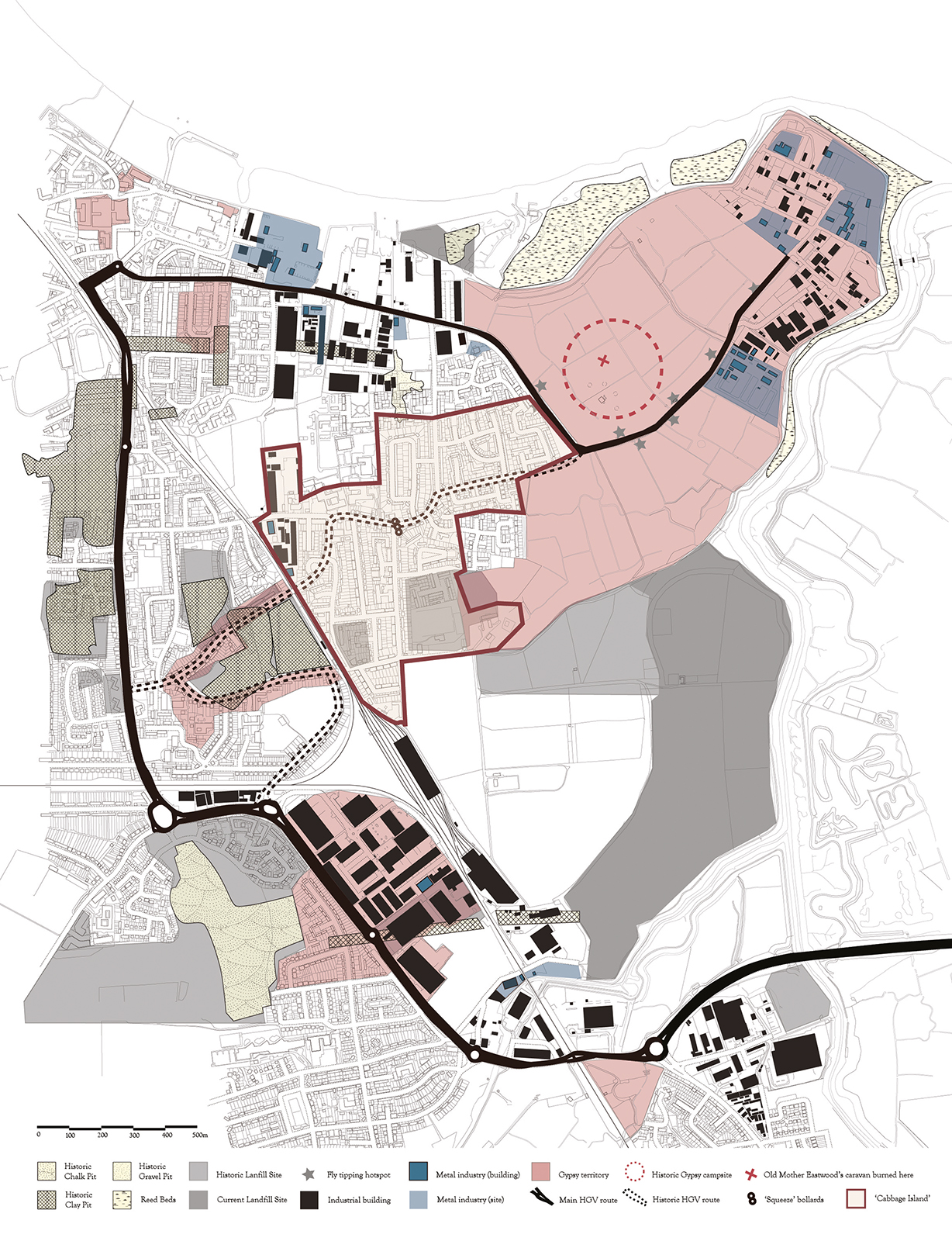
Every year in the UK more than 23 million tonnes of excavated soil (including clays) are sent to landfill from construction sites. 13% of all new products sent to construction sites are sent to landfill without ever being used. Yet material supplies are running low. The shortfall of bricks in the UK is 1.4 billion a year. English brickmakers cannot keep up with demand – clay and bricks are being needlessly imported from the continent.

This proposal sets out a holistic approach to development that enables neglected landscape assets to be used for an affordable community self-build, as well as the creation of a public park that holds real meaning for residents.
Homes are built using clay dug from their own foundations and an on-site clay pit. Bricks are made and fired on site. River deposits (silty, gravelly earth) and local demolition waste are used for rammed earth construction.
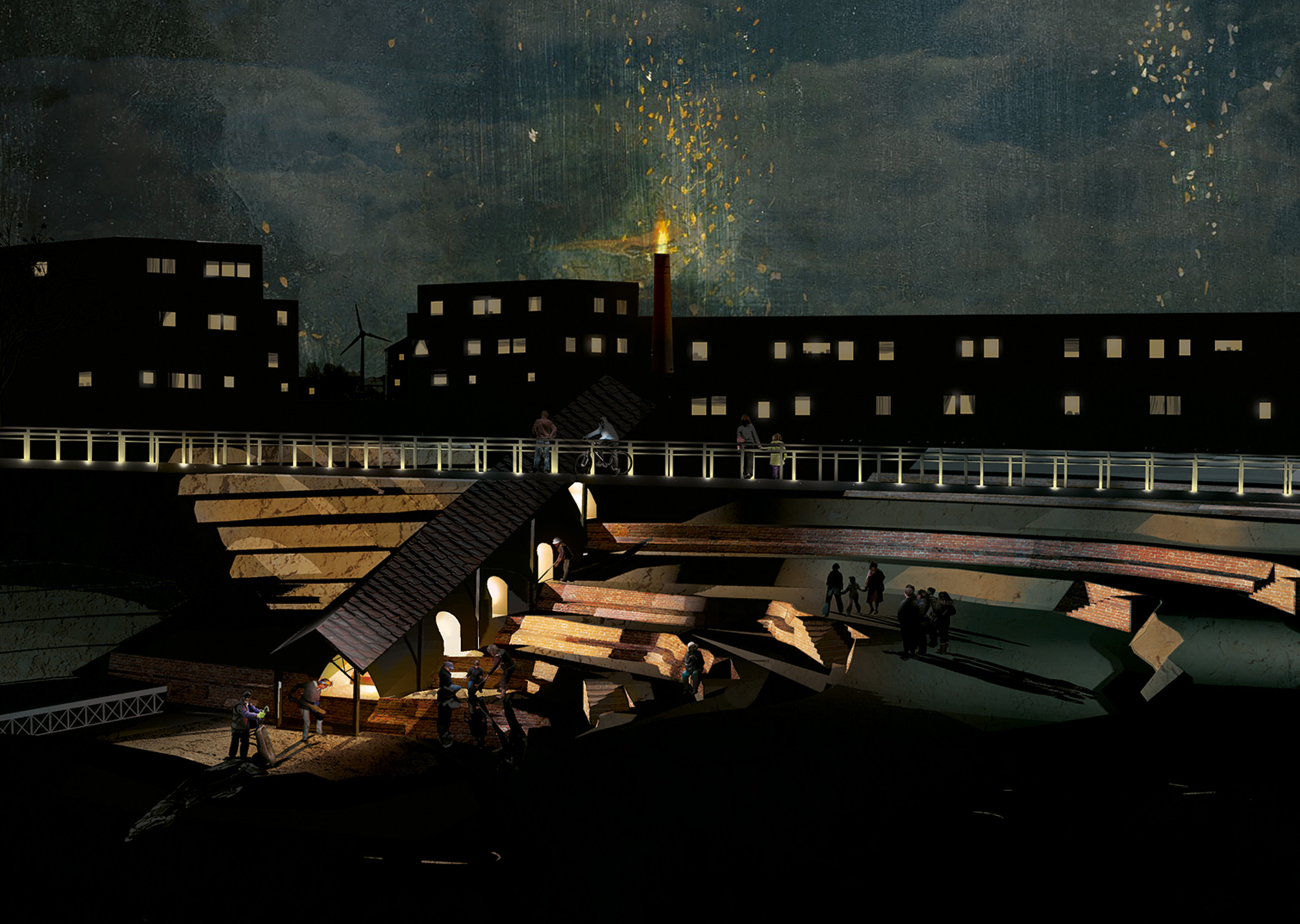
Expertise in earthen materials and the building trades are once again part of the everyday social and cultural life of Slade Green. People understand how their homes were built, where the materials that built them came from, who built them. Residents become true stakeholders in the future of their hometown. Communities are enabled to become experts in the raw and waste materials of their area, developing excellent sustainable building practices, based on innovation, resourcefulness and adaption of traditional craft knowledge to contemporary applications.
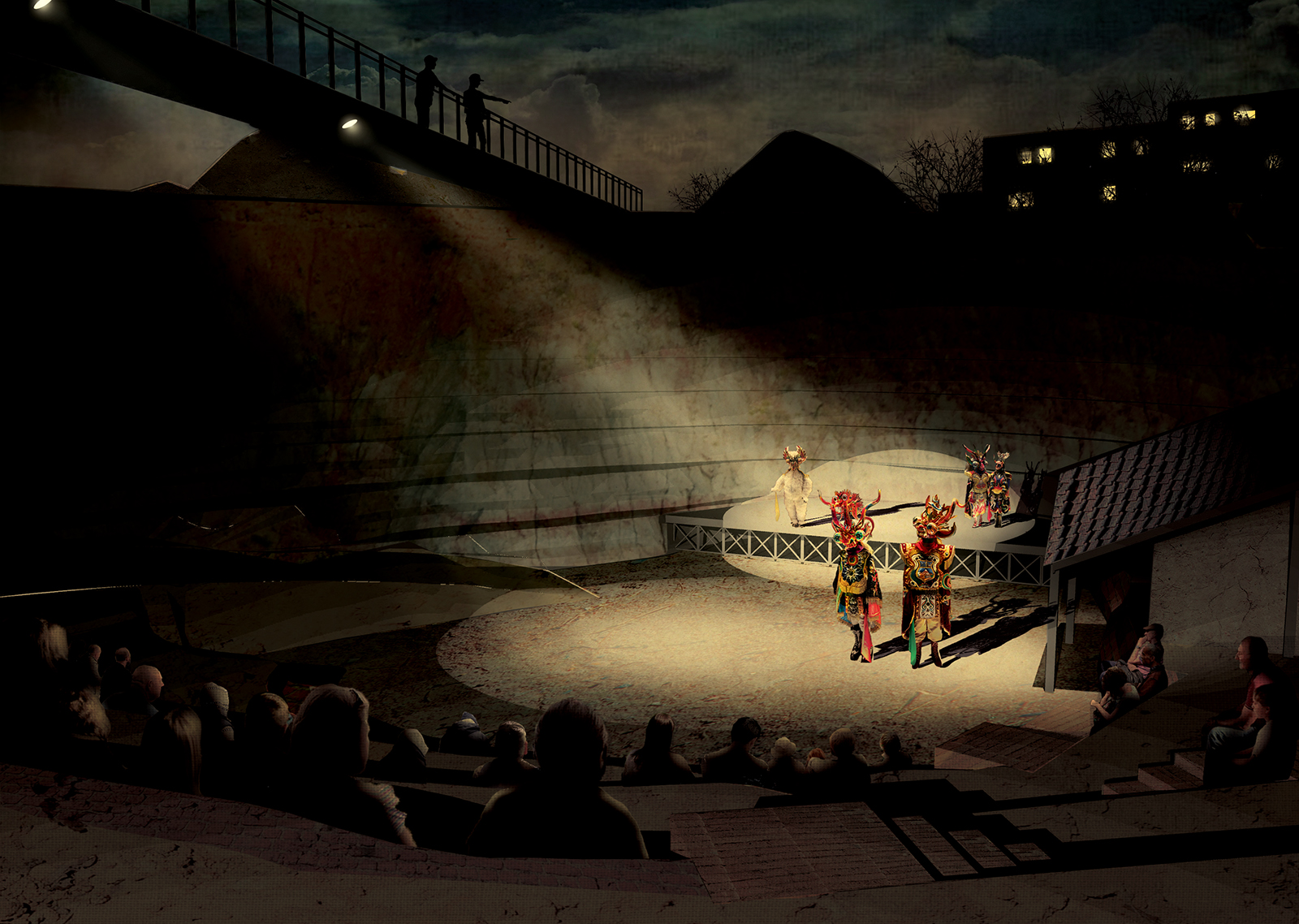
A terraced clay pit becomes an active working area for the housing development as well as an ever-changing public space. The industrial spaces and infrastructure of the brickyard allow for multiple temporary and future public uses. A stage is built at the bottom of the pit, and lighting suspended from a viewing bridge, so that the pit can be transformed into a theatrical amphitheatre. Passers-by have the opportunity to watch the earth below them being transformed into future homes.
‘Brick Park’ proposes a true neighbourhood of production, where public space is considered primarily as a process, an experience born from the interaction between specific people and a specific place.

When all development has come to an end, the clay pit at the centre of the neighbourhood will be managed for a return to nature, creating a wetland, providing vital eco-system services, and a wild public park. This tranquil place to visit will be a reminder for local people of the past achievements and future potential of their community.
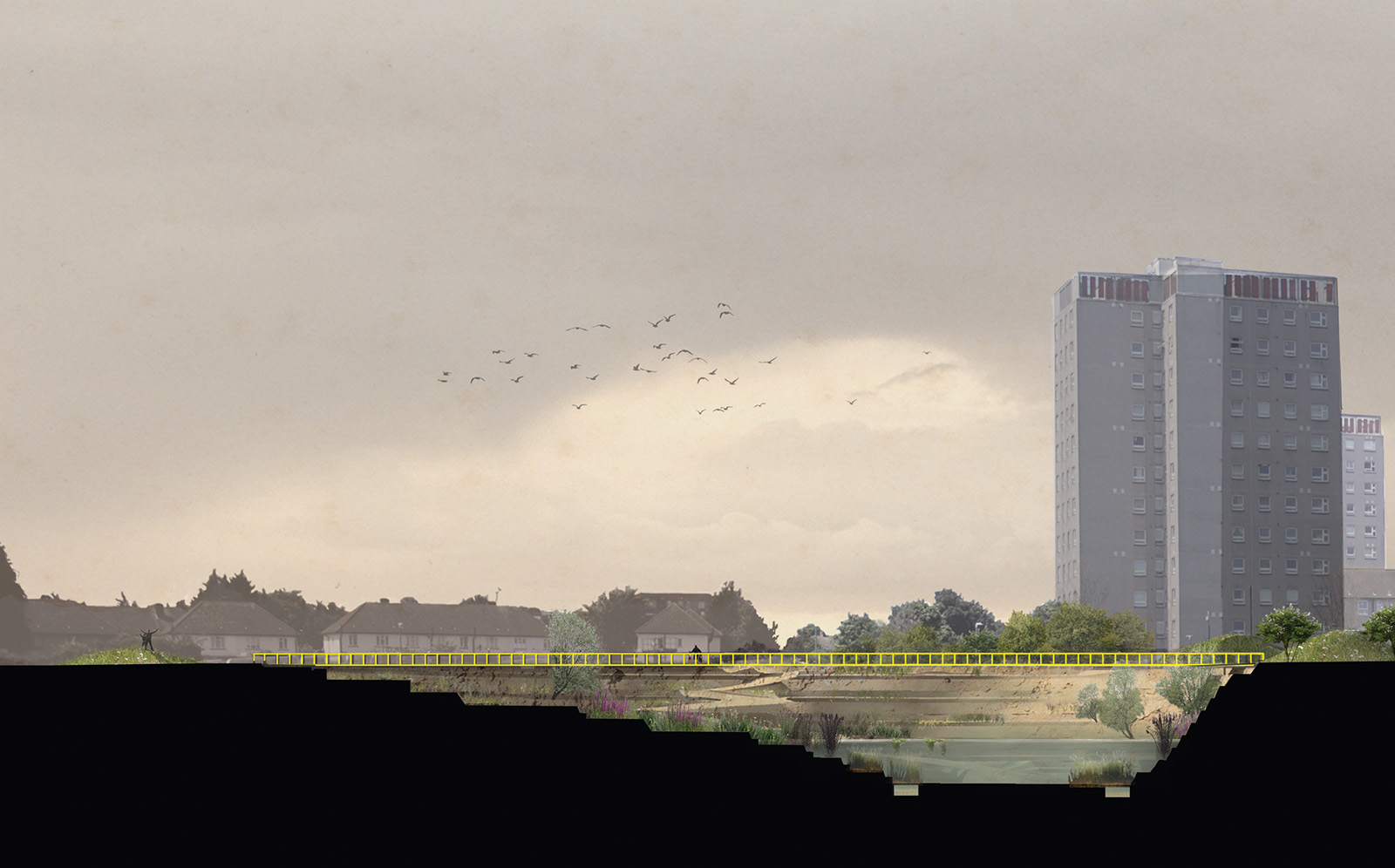
See Making bricks from construction waste for our research into the real world application of Brick Park principles.
You can find the full proposal here: Brick Park